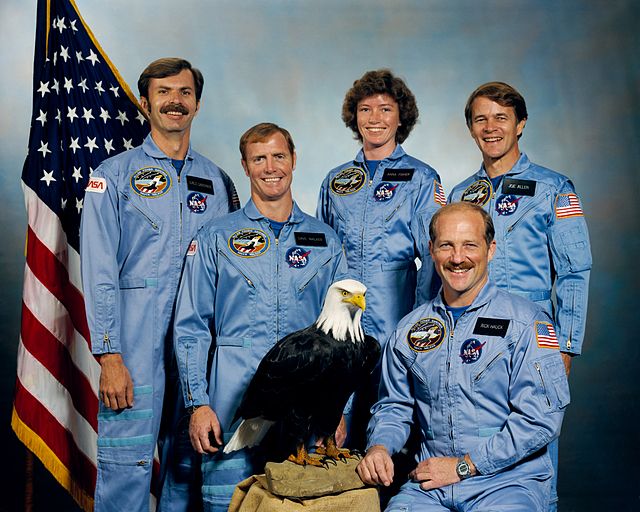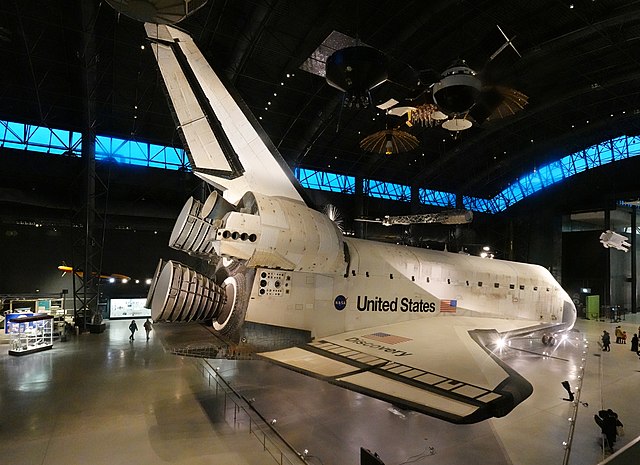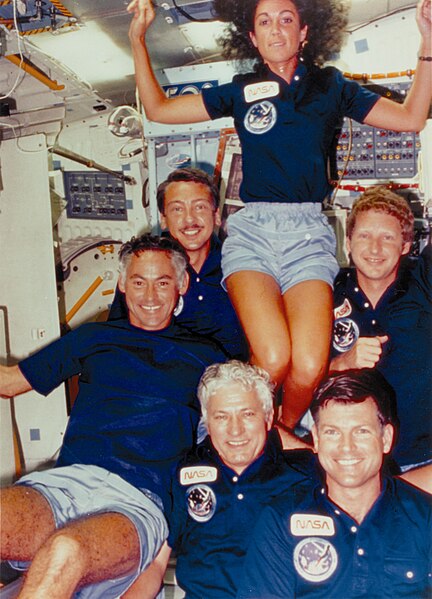STS-51-A was the 14th flight of NASA's Space Shuttle program, and the second flight of Space Shuttle Discovery. The mission launched from Kennedy Space Center on November 8, 1984, and landed just under eight days later on November 16, 1984.
Dale A. Gardner poses in front of a camera with a "For Sale" sign in his hand, jokingly referring to the two broken satellites (Palapa B2 and Westar 6) the crew was sent out on EVA to pick up and return to Earth.
Dale A. Gardner, David M. Walker, Anna Lee Fisher, Frederick H. Hauck, Joseph P. AllenSpace Shuttle program← STS-41-G (13)STS-51-C (15) →
Syncom IV-1 after deployment
Dale Gardner retrieves Westar 6.
Space Shuttle Discovery is a retired American spacecraft. The spaceplane was one of the orbiters from NASA's Space Shuttle program and the third of five fully operational orbiters to be built. Its first mission, STS-41-D, flew from August 30 to September 5, 1984. Over 27 years of service it launched and landed 39 times, aggregating more spaceflights than any other spacecraft to date. The Space Shuttle launch vehicle had three main components: the Space Shuttle orbiter, a single-use central fuel tank, and two reusable solid rocket boosters. Nearly 25,000 heat-resistant tiles cover the orbiter to protect it from high temperatures on re-entry.
Discovery in orbit in 2011, during STS-133, the orbiter's final flight
Space Shuttle Discovery at the Steven F. Udvar-Hazy Center
Discovery rollout ceremony in October 1983
On the maiden voyage of Discovery: Judith Resnik, Henry Hartsfield, Michael L. Coats, Steven A. Hawley, Charles D. Walker, and Richard M. Mullane








